Farming Simulator 22: Pigs - breeding, tips
On this page you will read about raising pigs in pigsty in Farming Simulator 22.
Last update:
The following page describes how to breed pigs in Farming Simulator 22. You will learn how to feed pigs, how pigsties differ from each other, how to get slurry and manure and how much you can earn on breeding.
You make money on pigs by selling adult animals for meat. They grow up quickly and have a high rate of reproduction. The growth rate is affected by the feed or single type of food you provide them. In addition, pigs produce significant amounts of natural manure - slurry (liquid) and manure (solid form - requires straw to be delivered to the pigsty). This way you can save a lot on fertilizers.
Types of farm houses
- Pasture: 30 individuals, feeding capacity - 9,500l (it also requires water supply), water capacity: 3,000l, price: 28,000 EUR
- Pigsty: 108 individuals, food capacity - 34,000l, straw - 15,000l, price: 109,000 EUR
- Large pigsty: 270 individuals, food capacity - 85,000l, straw - 45,000l, price: 164,000 EUR
It is worth investing in a pigsty right away, because the profitability of pig breeding is strongly dependent on the number of individuals. In addition, pigs breed very quickly. You can feed them almost anything, so even if you don't pay much attention to breeding, the investment will quickly return itself. In addition, the pasture does not allow to generate manure and slurry.
Types of pigs
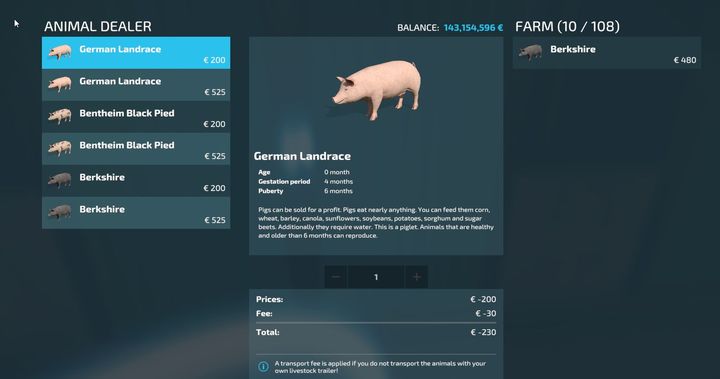
There are 3 pig species - they do not differ in anything except appearance. However, there is a significant difference in the age of the pigs - you can buy young, cheaper individuals (200 EUR) or adults (416 EUR) at the age of 6 months. If you decide to purchase adults, they will immediately reproduce under optimal conditions.
Feeding
If you want to ensure maximum productivity of pigs (reproduction/fertiliser production/value - dependents on Health), you must provide them with the best possible food or a mix of different ones.
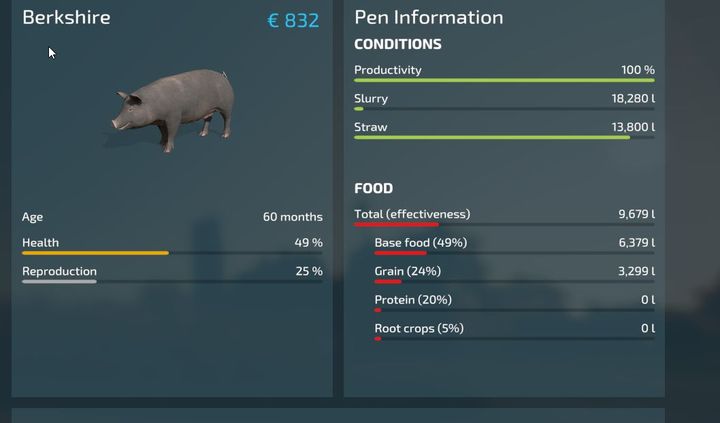
Pigs feed on the following plants, divided into four groups - each having a different efficiency:
- Base food (maize/sorghum) - 50% efficiency,
- Grains (wheat/barley) - 25% efficiency,
- Proteins (soybeans/canola/sunflower) - 20% efficiency,
- Root crops (potatoes/beets) - 5% efficiency.
The reality is a little different, though. Pigs require basic food and at least one of the other categories of plants. So you have to grow corn or sorghum (maize yields slightly higher per hectare) and for example - barley (due to the large harvest per hectare).
The consumption of a given type of food is proportional to the indicated efficiency: if a pig eats 50l of corn, then it will only need 25l of wheat and 5L of potatoes. The problem may be the dosage of food, also because it is possible to fill the entire warehouse with one type of plant, so you will not be able to add more products.
![If you want maximum productivity without having many crops, you can get Pig food from the store (available on pallets and in bags) [not to be confused with Mineral feed] - Farming Simulator 22: Pigs - breeding, tips - Farming Simulator 22: Breeding - Farming Simulator 22 Guide](/farming-simulator-22/gfx/word/968782984.jpg)
If you want maximum productivity without having many crops, you can get Pig food from the store (available on pallets and in bags) [not to be confused with Mineral feed]. It provides 100% of the production from animals, but it is not cheap, meaning it will affect your profit from pigs. Pig feed can be bought in large bags of 1,000l, which, unfortunately, is not very convenient because of the long loading time on the trailer. You can pour it in a trailer for easier transportation.
You cannot place the pallet with the feed in the feeding place - if you do not load the pallet onto the trailer, you have to hold the pallet in the air - it has a hole in the bottom, from which the feed will start to pour.
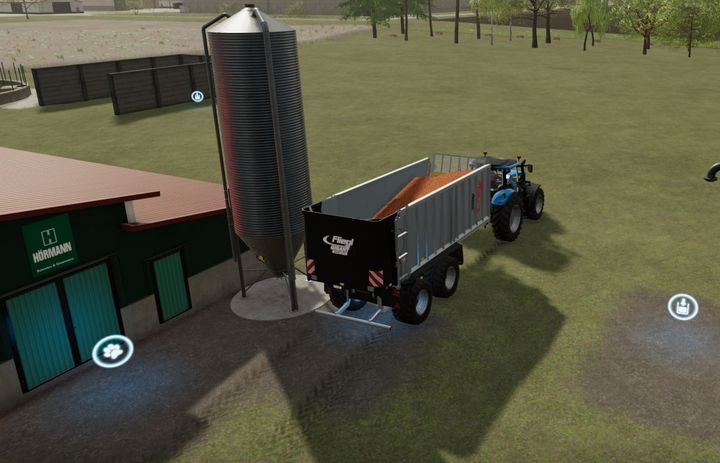

Straw does not affect the health of animals and is only an optional ingredient to produce manure. You have to drop it in the feeding area.
Reproduction
Pigs reach maturity at the age of 6 months. With full health and satisfying all needs (full-value feed, straw, optionally water), subsequent animals will be born after the period 4 months (increase in the reproduction rate by 25%/month). You can easily calculate how long you will have to wait if you feed the animals with lower efficiency food. One animal produces one offspring.
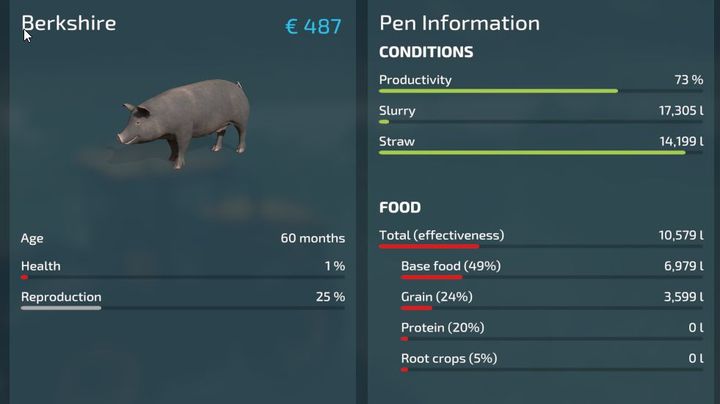
Reproduction will not begin until the animal's health bar is full. This will only happen once you have met all animal requirements (water/food). Depending on the effectiveness of the food, the health bar will fill up faster or slower. Straw is not required to improve health.
Slurry and manure
Pigs produce slurry and, optionally, manure. For the latter, you need to build a special prism near (approx. 30m from the building) the pigsty. The pastures will produce neither manure nor slurry. In addition, manure requires straw - without it, animals develop and multiply normally, but you will not get valuable fertilizer.
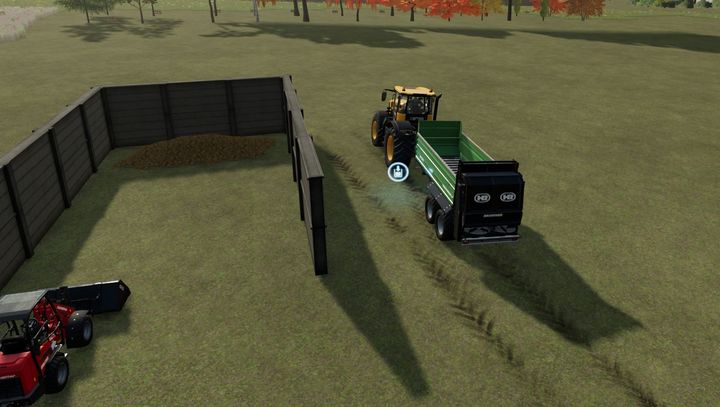
Fertilizers - even if you do not use them, you can sell them in a biogas plant, so it is worth to provide straw to pigs and collect a pile of manure. Prices are shown in the menu.
If you have your own biogas plant, both types of fertiliser supplied to it will be converted into smaller amounts of digestate - a slurry substitute. This is a great way to standardize the way of fertilization, cope with excess fertilizer and extra cash (the profit from the biogas plant).

Profitability
Since you get money mainly from animals, it is worth using a trailer to transport them to a selling point, so as not to pay additional costs. However, if you raise pigs mainly for fertiliser, you won't have to transport large quantities of pigs on your own that often.
Rounded values. Production and consumption calculated on a monthly basis for 10 animals.
Adult pigs (6th month) | |
Purchase price | 525 EUR/piece |
Food consumption (monthly) | 600 |
Straw consumption (monthly) | 200 |
Manure production (monthly) | 350 |
Slurry production (monthly) | 650 |
Breeding | Every 4 months |
Maximum value of animals: 1,200 EUR (at the age of 24 months).
You are not permitted to copy any image, text or info from this page. This site is not associated with and/or endorsed by the developers and the publishers. All logos and images are copyrighted by their respective owners.
Copyright © 2000 - 2025 Webedia Polska SA for gamepressure.com, unofficial game guides, walkthroughs, secrets, game tips, maps & strategies for top games.
